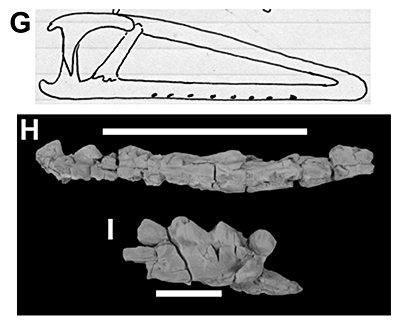In 1923, paleontologist Charles Camp recorded the discovery of an unusual-looking skull from the Late Triassic (~220 mya) of Arizona, USA. He made a field sketch before attempting to remove the fossil from the surrounding rock – only for it to completely fall apart, leaving just a couple of intact fragments covered in odd bony knobs.

The fossils were stored away at the University of California Museum of Paleontology and were left forgotten for the next sixty years. Eventually they were rediscovered by Robert Long and Phillip Murry, and described in 1989 with the name Acallosuchus rectori (meaning “Rector’s ugly crocodile”).
But what is it?
At first it was classified as a proterochampsid, a group of archosauriforms known from South America. But this classification was based on some additional skeletal remains that were thought to belong to it, which were later split off and named as the semi-aquatic Vancleavea instead. It’s also been compared to Doswellia and the pseudosuchian Revueltosaurus.
The material is just far too fragmentary to make a confident identification, and the original sketch is anatomically unclear. At best we can say that Acallosuchus was an “indeterminate diapsid” – some sort of reptile, but for now nobody knows what.
I’ve restored it here based mainly on proterochampsids, but any interpretation of this animal is going to be highly speculative until more fossil material is found.

